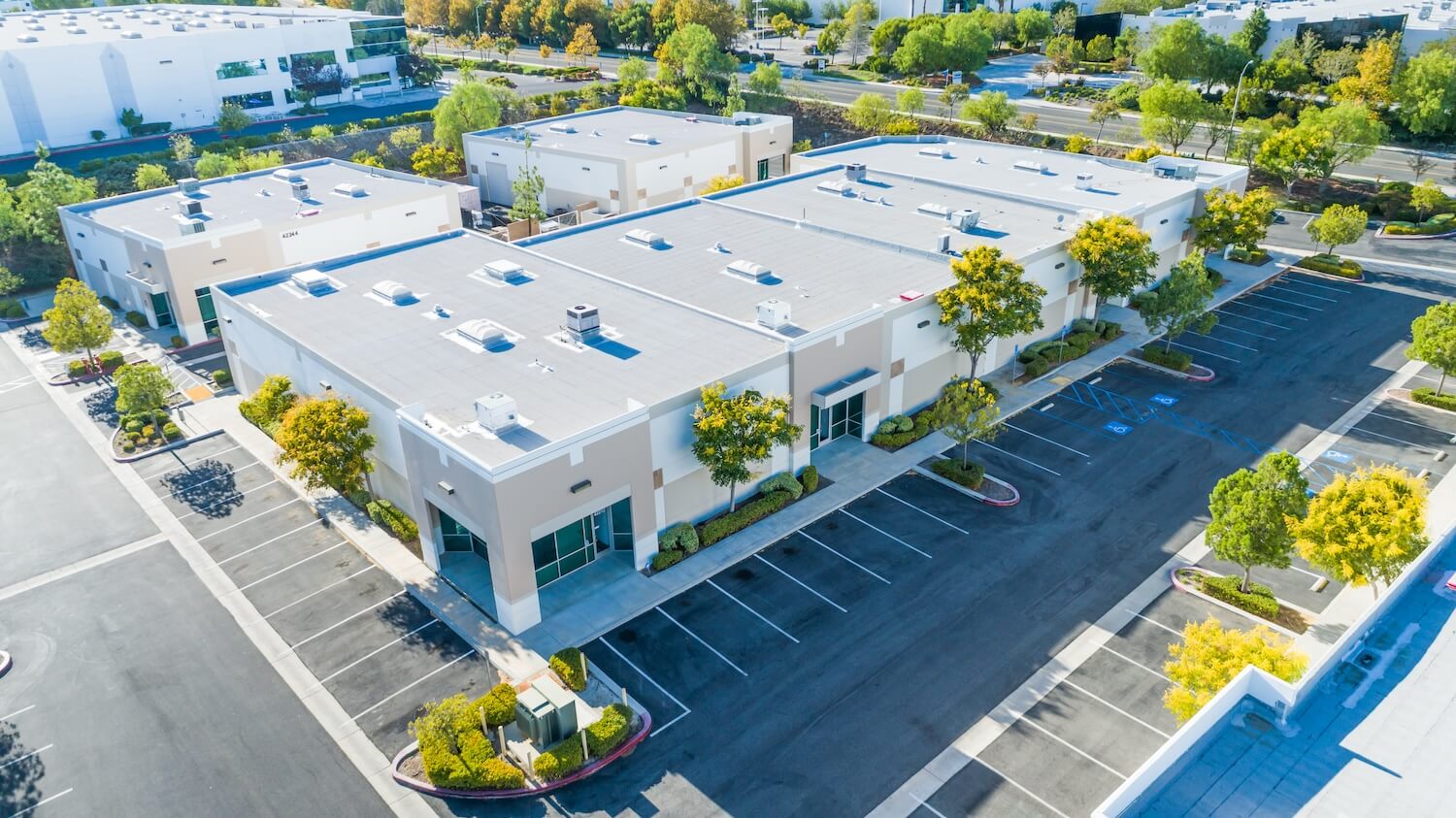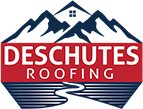A commercial roof is one of the most essential components of your property, safeguarding everything from your employees to your equipment, inventory, and even the structural integrity of the building itself. As such, ensuring its upkeep is vital to the long-term success of your business. A damaged or failing roof can lead to expensive repairs, business disruptions, and even potential safety hazards for both employees and customers.

Roof repairs can be costly, but regular inspections and timely maintenance can help you avoid major issues down the line. Understanding the signs that indicate your commercial roof needs attention is crucial for any business owner.
This article will explore the most common signs that your roof requires repair, delve into the potential causes behind these issues, and offer practical advice on how to handle them.
1. Visible Roof Leaks and Water Stains
Arguably, the most obvious sign that your commercial roof needs repair is the presence of water stains, dampness, or visible leaks inside your building. Water stains often appear on ceilings and walls as discolored patches or streaks. These signs of water infiltration should never be ignored, as they can lead to far more serious problems if not addressed quickly.
Why It Happens:
Leaks can occur due to a variety of factors, such as cracks or holes in the roof membrane, broken flashing, or a failure in the seal around roof penetrations like vents, pipes, and skylights. Clogged gutters or drains can also contribute to water buildup, which increases the likelihood of leaks. Once water starts to seep into the building, it can cause further damage to the structure, the electrical system, and any inventory stored inside the facility.
What to Do:
If you notice water stains or dampness, it’s important to inspect the roof immediately. Start by looking for any obvious holes, cracks, or damaged roofing materials. If you cannot locate the source of the leak, you should hire a professional roofing contractor to perform a thorough inspection of the entire roofing system. Early detection of leaks can prevent expensive repairs and potential business disruptions.
2. Damaged Roof Flashing
Flashing is a metal strip used around roof protrusions such as chimneys, vents, and skylights, as well as around the joints and seams of the roof. Its role is to prevent water from entering these areas. Over time, flashing can become damaged or dislodged due to extreme weather conditions, poor installation, or simply age. If flashing is compromised, the risk of leaks increases significantly.
Why Issues Happen:
Flashings can rust, crack, or become loose from repeated exposure to rain, snow, ice, and wind. The expansion and contraction of materials due to temperature fluctuations can also weaken flashing. Additionally, if flashing isn’t properly installed initially, it can fail prematurely, allowing water to enter the structure.
What to Do:
Check the flashing around any roof penetrations or seams to ensure it’s intact and securely fastened. Look for signs of rust, cracks, or gaps. If you find any problems, it’s essential to repair or replace the flashing immediately to prevent water from entering and damaging the building. A roofing contractor can assist with resealing or replacing damaged flashing to restore its protective function.
3. Cracks and Holes in the Roof Surface
Small cracks or holes in your commercial roof might seem minor, but they can rapidly escalate into much larger issues if left untreated. Even a seemingly insignificant crack can let in water, and over time, this moisture can deteriorate the roofing material, leading to leaks and other forms of damage.
Why It Happens:
Roofing materials can crack or form holes as a result of temperature changes, physical damage from debris, or the natural aging process. The expansion and contraction of the materials caused by temperature fluctuations can lead to cracking, particularly in materials like asphalt shingles or rubber membranes. Hail or fallen tree branches can also cause physical damage to the roof surface, leaving it susceptible to further wear.
What to Do:
It’s important to visually inspect your roof for any visible cracks or holes, particularly after a storm or extreme weather event. If cracks are found, they should be patched or sealed immediately. Small cracks can often be repaired with roofing sealant, but larger holes or damage may require a more comprehensive repair or replacement of the damaged sections. Always consult with a roofing professional to ensure the issue is addressed properly.
4. Pooling Water on Roof
If you notice standing water or pooling water on your commercial roof, particularly if your building has a flat roof, this could be a sign of serious drainage issues. Standing water is a major cause of roofing material deterioration, and over time, it can lead to leaks, mold growth, and even structural damage.
Why It Happens:
Pooling water is typically caused by poor drainage. If the roof lacks a proper slope, water will accumulate in certain areas rather than draining off. Clogged gutters or downspouts can also obstruct water flow, contributing to water buildup on the roof. Additionally, dirt and debris can accumulate in drains, blocking them and causing water to pool.
What to Do:
Regularly inspect the roof’s drainage system, including gutters, downspouts, and drains. Remove any debris that may obstruct water flow and ensure that water is draining properly from the roof. If pooling water persists, you may need to have a professional roofer adjust the slope of the roof or install additional drainage systems. Ignoring this issue can lead to severe water damage and more costly repairs.
5. Sagging Roof Deck
A sagging roof is a significant cause for concern. If your roof appears to have a noticeable dip or sag in the center or along certain sections, this is a sign that the structural integrity of the roof has been compromised. A sagging roof deck is typically caused by excessive weight or water damage.
Why It Happens:
When water infiltrates the roof and seeps into the roof deck, it can weaken the supporting beams and trusses. Over time, the weight of the trapped moisture can cause the roof to sag. Snow and ice accumulation can also add significant weight to the roof, which may lead to structural issues if the roof isn’t properly designed to support it.
What to Do:
If you notice any sagging in the roof, you must contact a roofing professional immediately. A sagging roof deck can be a safety hazard and requires prompt attention. A roofing contractor can assess the structural damage and determine whether the decking, beams, or trusses need reinforcement or replacement.
6. Aging Roof Materials
All roofing materials have a lifespan, and eventually, even the highest-quality roof will need to be replaced. If your roof is approaching or surpassing its expected lifespan, you should start monitoring it more closely for signs of wear and tear.
Why It Happens:
Roofing materials degrade over time due to constant exposure to the sun, wind, rain, and snow. Shingle roofs, for example, typically last between 15 and 30 years, depending on the material and quality of installation. Flat roofs, on the other hand, may last anywhere from 10 to 20 years. As your roof ages, it becomes more prone to leaks, cracks, and other forms of damage.
What to Do:
If your roof is nearing the end of its lifespan, it’s important to conduct regular inspections to catch any issues early. A professional roofing contractor can assess the condition of the roof and let you know if a replacement is necessary. Regular maintenance and minor repairs may extend the life of the roof, but eventually, replacement may be the best course of action.
7. Moss, Algae, or Mold Growth on Roof
The growth of moss, algae, or mold on your commercial roof is often an indication of trapped moisture. These growths can weaken the roofing materials and provide the perfect environment for more severe water damage to occur.
Why Issues Happen:
Moss, algae, and mold typically grow in areas where water accumulates and doesn’t drain properly. Areas of the roof that are shaded or exposed to high humidity are more prone to these growths. Over time, the roots of moss can penetrate roofing materials, causing them to lift and crack.
What to Do:
If you notice moss or algae growing on your roof, it’s essential to have it removed by a professional roofing contractor. Power washing or chemical treatments can be used to remove the growth, but care must be taken not to damage the roofing materials in the process. Once removed, you may need to address the underlying cause of moisture buildup, such as poor drainage or leaks.
8. Unpleasant Odors Inside the Building
If you detect unpleasant, musty, or moldy odors inside your commercial building, it could be an indication of water infiltration through the roof. Mold and mildew can quickly grow in areas where moisture is trapped, and their presence is often accompanied by an unpleasant odor.
Why It Happens:
Moisture inside the building provides the ideal environment for mold and mildew growth. Over time, this can damage building materials and even pose health risks to employees and customers.
What to Do:
If you suspect mold or mildew is caused by roof leaks, it’s crucial to have a professional roof inspection as soon as possible. Mold remediation and water damage restoration may also be necessary if the issue is widespread.
9. Energy Efficiency Problems
An improperly sealed roof can allow conditioned air to escape from your building, leading to higher energy bills and less effective heating or cooling. If you notice that your energy costs are rising without any other apparent cause, it could be due to roof damage.
Why It Happens:
Damaged roofs, poor insulation, and leaks can allow heat to escape in the winter or cool air to escape during the summer, forcing your HVAC system to work harder.
What to Do:
Have your roof and insulation inspected to ensure everything is properly sealed. If any issues are found, they should be repaired to improve energy efficiency and reduce energy costs.
Commercial Roof Conclusion
A well-maintained commercial roof is critical to the success of your business. By staying vigilant and addressing these common signs of roof damage, you can avoid more costly repairs and protect the integrity of your building. If you notice any of these issues, don’t hesitate to contact a professional roofing contractor for an inspection and assessment. Regular maintenance and timely repairs will help extend the life of your roof and ensure that your business stays protected for years to come.










